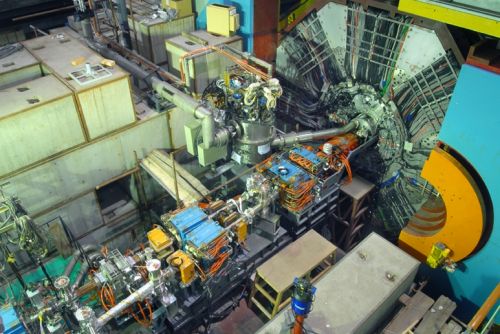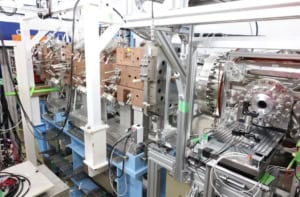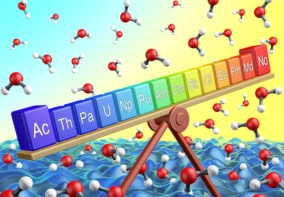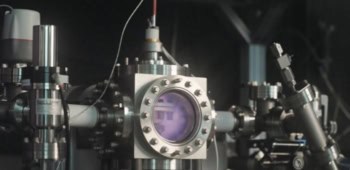
Twenty years after it smashed electrons and positrons together for the first time, China’s foremost particle-physics accelerator could soon be boosting the rate of its collisions a hundred times over.
The increase in output will be the result of a four-year-long upgrade at the Beijing electron–positron collider (BEPC) and a redesign of its detector, the Beijing spectrometer (BES), at a cost of ¥640m ($77m). Two weeks ago the overhauled facility saw a return to particle collisions, and researchers are now tweaking it for optimum collision luminosity.
“I think people are working hard to push the upgrade, to tune the machine for higher performance and to get data as soon as possible,” says Hesheng Chen, director of the Institute of High Energy Physics (IHEP), which runs the collider. Chen told physicsworld.com that he expects the first useable data from the collisions to be taken in the autumn.
‘Need more statistics’
BEPC is a dual-purpose facility, providing a testing ground for particle physics as well as hard X-ray synchrotron radiation for studies in materials and life sciences. In its original form, it had a single 240 m-long ring of magnets that accelerated bunches of electrons and positrons in opposite directions, colliding them with a luminosity of 1031 particles per square-centimetre per second (cm–2s–1).
The collisions produced particles containing a charm quark and an anticharm quark, which decayed rapidly into other mesons. Using BES to measure the energy and momentum of this debris, researchers have been able to measure various properties of the parent charmed particles, such as the J/Ψ — a particle containing a charm and an anticharm quark. The researchers could also measure the so-called R value, which tells how often the collisions produce hadrons (particles containing quarks).
The upgraded collider, called BEPC-II, has added another ring to the outfit. This means that the electrons and positrons can be accelerated separately, so that up to 93 bunches — as opposed to just one — can be fit into each ring. Luminosity has so far been tripled, but Chen thinks should reach 3 x 1032 cm–2s–1 by the end of the year and 1033 cm–2s–1 in two years, which would mark a hundred-fold improvement. The detector redesign, called BES-III, uses stronger superconducting magnets to measure the energy and momentum of the debris particles with higher precision.
“During the past five to eight years there have been interesting results in the charm quark region — the pentaquarks, and the pp(bar) bound state, which was observed in the BEPC,” explains Chen. “But so far we do not really understand those particles; we need more statistics to pin them down.”
‘Best machine’ for charmed particles
Chen thinks that the increase in data will help in the search for rare decay events. It should also give better error bars for the R value in the charm energy region, which are currently around 6% but which BEPC-II should reduce to around 1–2%.
In terms of electron–positron colliders, BEPC-II sits somewhere close to the middle of collision energies, at around 3–5 GeV. DAFNE — an accelerator based at the Frascati National Laboratories near Rome that has also recently installed an upgrade — smashes electrons and protons at about 1 GeV to produce phi-mesons. At higher energies, there’s KEKB at KEK in Japan and the recently closed PEP-II at SLAC in the US, both of which have operated at about 10 GeV to produce B-mesons. There are also higher-output versions of these latter “B-factories” in the pipeline. “The BEPC-II is the best machine in the charm energy region,” says Chen.



